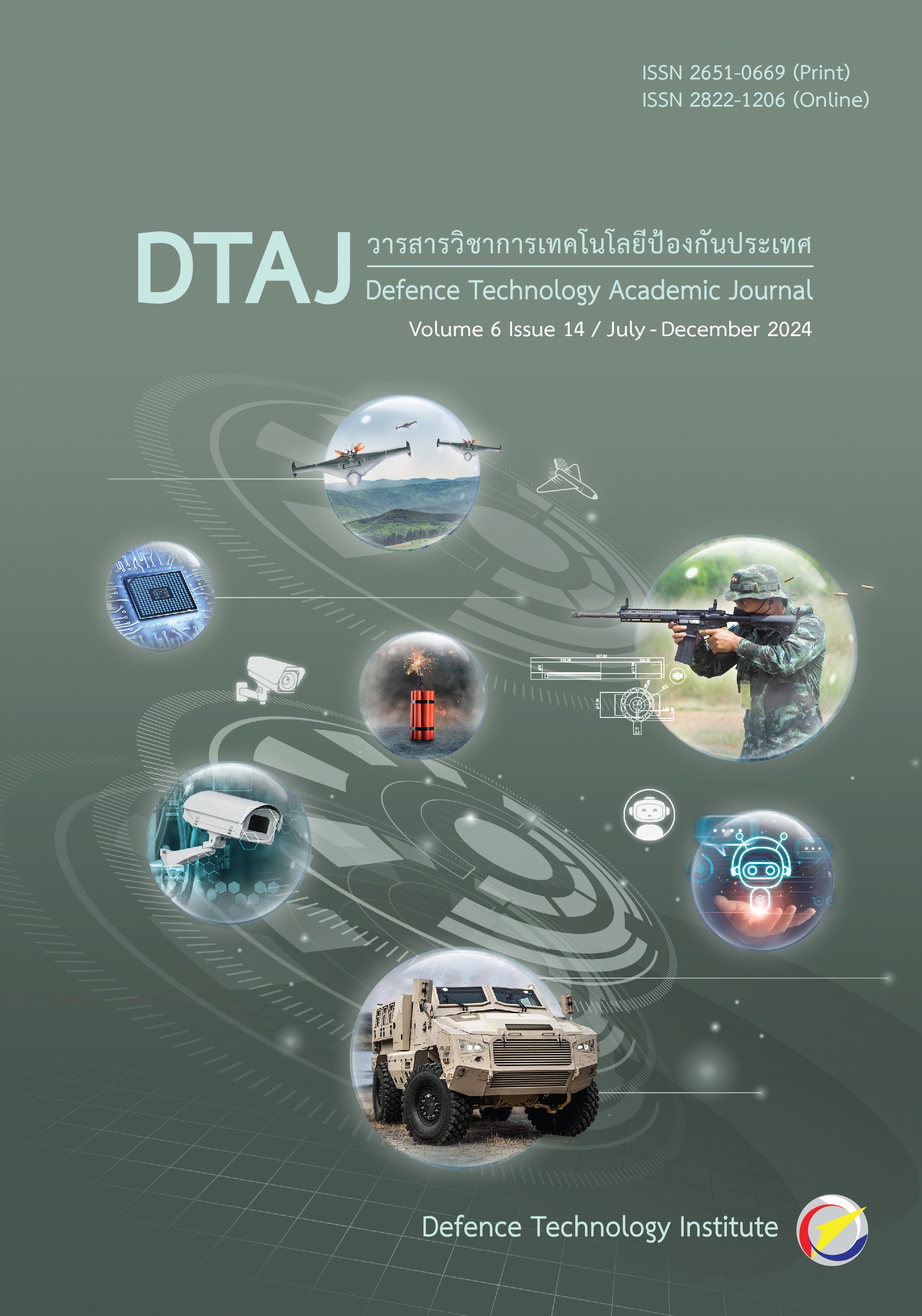The Improvement Mechanical Properties of Pressure Tube by Induction Hardening Process
Main Article Content
Abstract
The aim of this study was to explore the impact of induction hardening on the microstructure and mechanical properties of AISI 4130 steel improvement strength of pressure tube application. The primary objective is to enhance the strength of the tube ends, which are susceptible to failure due to excessive loads during service. However, due to the shape limitations of the pressure tube, traditional electric furnace hardening methods cannot be used to increase its strength. Therefore, there is a need to study induction hardening methods that can apply localized heat treatment. The investigation commenced use of finite element analysis to predict the result of the process. In experiments the samples were heated with a 15 kHz medium frequency induction hardening process, followed by water quenching. Subsequently, the samples underwent metallographic preparation, microstructural analysis, hardness testing and tensile testing. The findings revealed that the microstructure of Hardening Zone, HZ exhibited lath martensite and retained austenite in their microstructures. The average as-rolled was mechanical properties measured at 284.65 HV for hardness and ultimate and yield strength 749.39 MPa, 685.17 MPa respectively for tensile properties. In contrast, Hardening Zone, HZ containing lath martensite, experienced an approximately two-fold increase in mechanical properties compared to the as-rolled state. The finite element analysis results are closely align with experimental findings. Conclusion, induction hardening proved to be an effective heat treatment method for enhancing the mechanical properties of the AISI 4130 steel, as evidenced by the observed changes in microstructure and mechanical properties. The above method can be applied to improve the mechanical properties of pressure tube to application more responsive to usage. Furthermore, it confirms the usefulness of finite element methods in the design process.
Downloads
Article Details

This work is licensed under a Creative Commons Attribution-NonCommercial-NoDerivatives 4.0 International License.
Journal of TCI is licensed under a Creative Commons Attribution-NonCommercial-NoDerivatives 4.0 International (CC BY-NC-ND 4.0) licence, unless otherwise stated. Please read our Policies page for more information...
References
K. Thummikanonth, T. Boonluang, T. Pornyungyuen, and S. Saidarasamutr, “A Study of Trapezoidal Thread for Thin-Wall Tube Application,” in AMMSE 2015, Jeju Island, South Korea, 2015.
ASM International Handbook Committee, ASM Handbook Volume 4: Heat Treatment, 10th ed. Ohio, USA: ASM Int., 1991.
V. Rudnev, D. Loveless, and R. L. Cook, Handbook of Induction Heating, 2nd ed. Boca Raton, FL: CRC Press, 2017.
J. J. Coryell, D. K. Matlock, and J. G. Speer, “The Effect of Induction Hardening on the Mechanical Properties of Steel with Controlled Prior Microstructures,” Mater. Sci. Technol., vol. 2, p. 8, 2005.
S. Saidarasamutr, T. Suriyea, and T. Pornyungyuen, “A Study of Property of Materials for Rocket Motor Case Prototype,” in IE Netw. Conf. 2012, Pethchaburi, Thailand, 2012.
R. Lenhard, M. Malcho, and K. Kaduchová, “Numerical Simulation of Induction Heating Thick-Walled Tubes,” in MATEC Web Conf., vol. 168, 2018, p. 02004.
V. Hathairathsiri, S. Chudjuarjeen, and S. Koomsap, “A High Frequency Induction Heater by using Pulse Density Modulation for Surface Hardening Application,” Office of the Higher Education Commission, Bangkok, Thailand, Rep. 2554A16662006, 2012.
V. Rudnev, “A Fresh Look at Induction Heating of Tubular Products: Part 1,” Heat Treating Prog., pp. 17-19, 2004.
R. Ismail, D. I. Prasetyo, M. Tauviqirrahman, E. Yohana, and A. P. Bayuseno, “Induction Hardening of Carbon Steel Material: The Effect of Specimen Diameter,” Adv. Mater. Res., vol. 911, pp. 210 - 214, 2014.
L. Semiatin, “Induction Heat Treatment,” Techcommentary: EPRI Center for Materials Fabrication, vol. 2, no. 2, 1985. (Reprinted March, 1990).
R. Choteborsky and M. Linda, “FEM based Numerical Simulation for Heat Treatment of The Agricultural Tools,” Agronomy Res., vol. 13, no.3, 629 - 638, 2015.
K. Kurek and D. Dolega, “Modeling of Induction Hardening,” in Proc. Int. Sci. Colloq.: Model. Electromagn. Process., Hannover, Germany, 2003, pp. 125 - 130.
Standard Specification for General Requirements for Steel Bars, Carbon and Alloy, Hot-Wrought, ASTM A29/A29M-20, ASTM International, West Conshohocken, Pennsylvania, USA, 2020.
D. Vysochinskiy and D. Rybakov, “On the Effect of Various Heat Treatments on Microstructure of AISI 4130 Steel Used in Sour Service Pipes,” in Proc. 39th Int. Conf. on Ocean, Offshore and Arctic Eng., Fort Lauderdale, FL, USA, 2020.
O. Poyraz and B. Ogel, “Recrystallization, Grain Growth and Austenite Formation in Cold Rolled Steels during Intercritical Annealing,” J. Mater. Res. Technol., vol. 9, no. 5, pp. 11263 - 11277, 2020, pp. 1 - 6.
S. Papaefthymiou, M. Bouzouni, and R. H. Petrov, “Study of Carbide Dissolution and Austenite Formation during Ultra - Fast Heating in Medium Carbon Chromium Molybdenum Steel,” Met., vol. 8, no. 8, p. 646, 2018.

